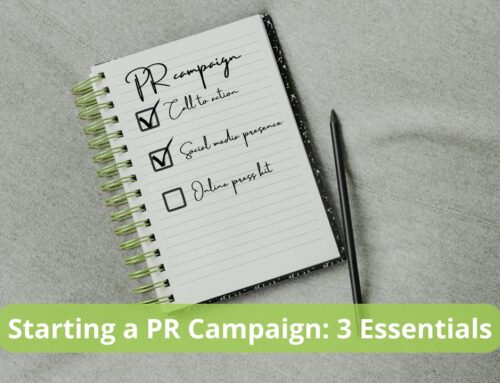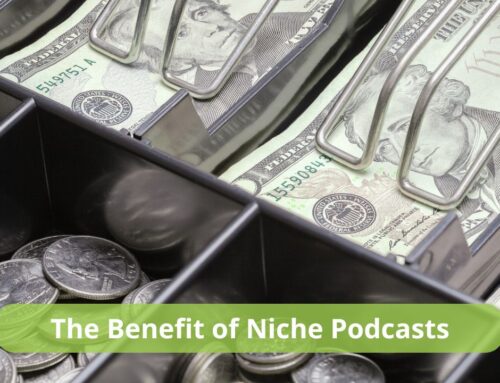Did you know I’m a third-year beekeeper? My uncles were beekeepers and while I was raised around raw honey, bees, and sticky situations, I didn’t take up the hobby until I realized the troubles our bee population faces. So, now, I do my part for my community by nurturing 300,000+ bees to pollinate neighboring farms, gardens and more so we have food on the table. This morning, I visited a pollinator garden in Western North Carolina, in the Smoky Mountains by the Continental Divide where I live. Here’s a video on my reflections while there which I’ll write about in today’s blog!
What are you pollinating? ?
In the video, I ask the question, “What are you pollinating with your everyday conversations?” Like bees moving nectar and pollen from flowers to the hive, so do humans share stories from person to person. Press people are keenly listening for the next story that will give them the scoop to impress their bosses and audiences.
So, what are you seeding with your sage sass?
Most people chit chat without thinking of the key messages delivered in their words. For people interested in impressing press contacts, it’s of utmost importance to consider their audience and goals for those audiences. For example, media seek to entertain, enlighten, or educate their readers, listeners, and viewers. If the pitch, press release or media alert you’re sending them doesn’t focus on their audience, it will most likely not generate results for you.
So, what do your key messages for others plant? Before getting into your media materials, just think about the last conversation you just had:
1) Is what you’re saying focused on you or them? ??
2) Are you sharing information, stories, or statistics that make a difference for another, or are you sharing gossip, conspiracy theories, or complaints? ??
3) When you’re speaking, is the other person uplifted and inspired or bothered and conflicted? ??
4) Have you taken the time to learn anything about the person with whom you’re conversing or are you just spewing information to whoever will listen? ??
After you answer these questions, notice the focus of your conversation — is it to make a difference for another, or is your chatter self-serving? This is key to the success of any public relations communication: focus on them. So many times, that is at the heart of what isn’t working for people pursuing PR: they focus on themselves and not the public interest or in other words, the public good at large.

Right now, it’s especially important to speak about breaking and seasonal news if you’re pitching a journalist or producer covering content for a general consumer audience. These are the top venues most people coming to my PR firm, Wasabi Publicity, desire, such as Good Morning America, The Today Show, Associated Press, the BBC, the Wall Street Journal, NPR, and the like. These venues are focused on general consumer news stories. So, that means they cover breaking news. It’s what you’ll hear press call ‘hard news.’ Right now, this week on June 2, 2020, riots, the pandemic, and politics are the angles they must cover according to their bosses. So, please don’t contact them with something about pets or pimple popping. Consider, your pet angle or skin health is what press call, ‘soft news.’
If you have soft news, like a pet pitch, consider only contacting trade industry press contacts currently. Magazines, radio shows, and bloggers who focus on pets would be delighted to hear from you. General consumer media contacts won’t have the time to bother with your pet pitch unless that pet pitch has a hard news angle. An example of that is a pet shelter closing or reopening due to the pandemic.
If you’re confused, don’t worry. I’ll help you distinguish the differences between hard and soft news angles or general consumer and trade press. Download for free (and no opt-in), the #21DayPRActionGuide at PitchRate.com and participate in our 21 Day PR Action Guide Challenge the first 21 days of the month. You can start any time and catch up as you like. Start working the workbook and then this Friday, join me live at 1 pm eastern where I’ll help you answer questions like:
1) What media materials should I send? ?
2) I want Good Morning America to pay attention to me, so do I need a topic related to the riots or the pandemic? ?
3) I’m not scoring any interview with my PR pitches – how should I organize my materials for best results? Could the way I’m presenting my materials be to blame? ?
4) I don’t have the direct phone numbers to the producers and journalists with whom I wish to work so how do I even go about pitching them? ?
Consider your PR pitching is akin to bees gathering nectar to make their honey. The job isn’t done overnight. It takes 556 worker bees to gather 1 pound of honey from about 2 million flowers. Yup. That’s a real fact you can check out. Likewise, your PR plan, pitches, and media relations overall need a strategy, time, and focus. Are you going to be a busy bee getting the results you want in PR? I hope so. Bees help each other. They have a complex communication system to share with each other nearby water, flowering hot spots, and more. All you need is a community of passionate PR folk to help you realize your dream. That’s this community. Welcome. Let’s get you buzzing in the press!







